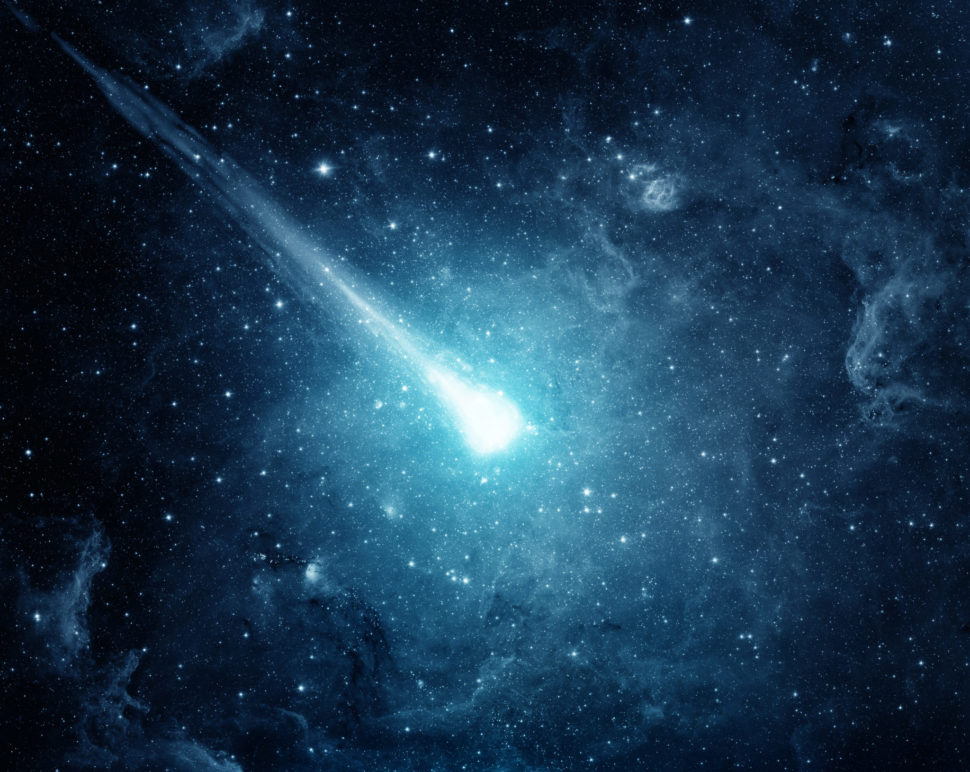For over a decade, scientists have been analyzing stardust collected by a NASA probe from a passing comet, the Wild 2. The study of these stardust samples could provide clues about the early days of our solar system.
When a trail of comet dust happens to be in Earth’s orbit as it passes by, we see it as a shooting star.
Besides their stunning view as they enter Earth’s atmosphere, comet dust gives us insights into the composition of comets and also the origins of our solar system.
The Stardust Mission and Wild 2 Comet
Since the end of the Apollo lunar program, NASA’s Stardust mission was the first to bring back dust samples from space. It’s also the first mission to ever collect comet dust from outside our atmosphere.
On February 7th, 1999, NASA launched the Stardust probe that, five years later, flew by the commonly-called Wild 2 comet (81P/Wild is its technical designation).
Discovered in 1978 by Swiss astronomer Paul Wild, the Wild 2 comet, (pronounced “Vilt”), is a small disk-shaped comet that orbits the Sun once every two years.
During the fly-by, the Stardust probe used aerogel to capture some of the dust Wild 2 left in its trail. It also managed to capture a small sample of interstellar dust.
The Stardust probe also took pictures and gave us what was then the closest ever shot of a passing comet.
The spacecraft returned to Earth in 2006 with its precious 125 pounds of extraterrestrial dust.
Hundreds of scientists have since worked on the Wild 2 dust sample using analytical techniques that have become more and more sophisticated over the years.
Read More: Life Didn’t Begin on Earth: it was Transported Here by Space Dust
How Could Comets Hold Answers to the Origin of our Solar System?
Since the Stardust mission, scientists have accumulated enough knowledge on comets and cosmic dust that a whole new field has emerged: Stardust Science.
Studying comet and cosmic dust in the lab revolutionized our understanding of comets. It also provides clues as to how our solar system formed.
“The future of Stardust science” is a study that gives a synopsis of about 150 papers published over the last decade or so. They focus on the discoveries and research which laid the foundations of stardust science.
One of the major points that the study highlights is that there is currently a large knowledge gap in the stardust science field. The gap mainly relates to the protosolar matter (dust and gas) from which our solar system and planets were formed.
This is where comet dust comes into play.
Comets are ancient bodies of the solar system that originate from either the Kuiper Belt or the Oort Cloud. Wild 2, for example, is a short-period comet which came from the Kuiper Belt.
Made up of dust and ice, comets are the leftovers of the formation of our solar system’s planets.
The primitive interstellar matter of comets can provide us with evidence of the solar system’s beginnings which have been kept frozen for about 4.6 billion years.
These studies may give us an understanding not only of our solar system. In fact, they may give us numerous new insights into other branches of physics, chemistry, and engineering.



















Comments (0)
Most Recent